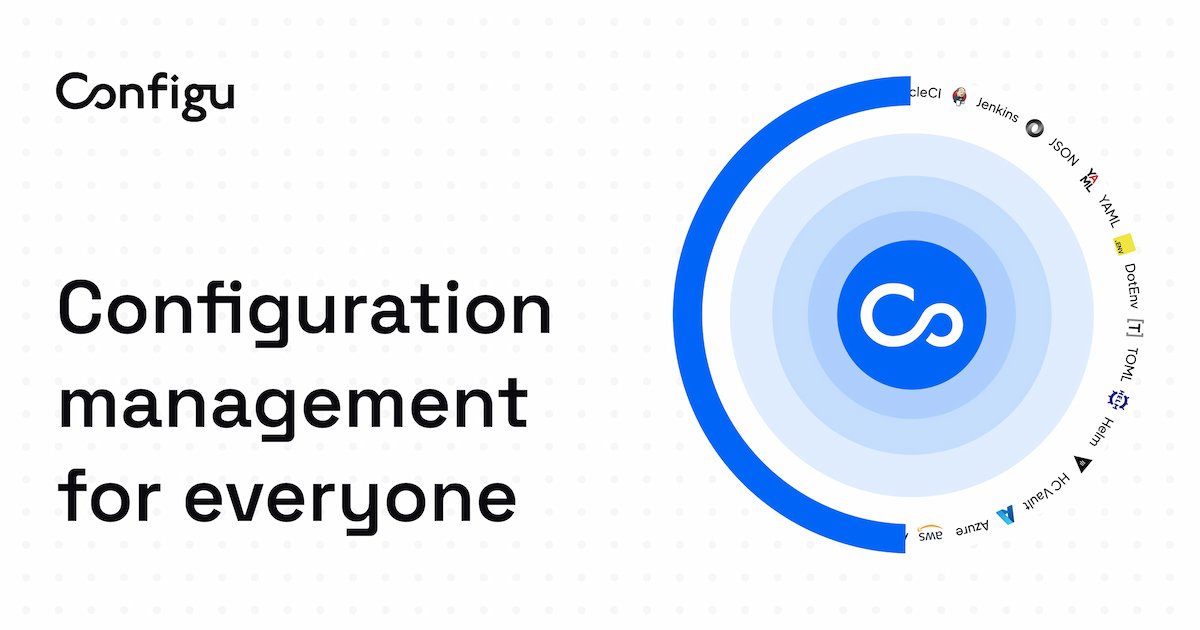CaC vs IaC vs Feature Flags
4 min read

Table of contents
Efficient management of configurations is essential in the software development landscape. Configuration-as-Code (CaC) is a transformative approach that merges software development principles with configuration management. Encapsulating configurations into code streamlines the process of storing, developing, and maintaining configurations throughout the software development lifecycle.
Configuration as Code (CaC)
With Configuration-as-Code (CaC), software configurations are transformed into code, providing ease in storing, developing, and maintaining configurations during code development.
CaC Features
Preventing Misconfiguration: CaC primarily aims to prevent misconfiguration, a common issue experienced across various companies and development teams. Misconfigurations often occur during development and testing phases, occasionally leading to outages in production.
Tracking and Versioning: CaC enables users to monitor changes made to application configurations and facilitates versioning and tracking.
Source Code Security: CaC ensures the security of source code by managing everything as code, providing consistency to various configuration files like Dockerfiles, JSON, YAML, secrets, and feature flags.
Collaboration: CaC facilitates collaboration among team members, ensuring alignment and consistency throughout the development process.
Scalability: CaC is flexible and can adjust and scale configurations to meet user demands.
Reducing Manual Errors: Automated CaC processes reduce the chance of human errors, resulting in more reliable and consistent application setups.
Infrastructure as Code (IaC) vs Configuration as Code (CaC)
While both IaC and CaC work together, IaC primarily focuses on infrastructure elements like CPU, load balancing, and networking, while CaC deals with software application configurations, including settings, behavior, and internal processes. Developers often prefer configuring everything as code due to its automation and security through testing.
Feature Flags vs Configuration as Code
Utilizing the SDK of a feature flag solution does not precisely align with the implementation of configuration as code. CaC revolves around abstract configuration, consolidating configurations into a single file rather than scattering them across multiple environments. CaC does not aim to replace feature flag solutions but acts as a management layer on top of them, providing consistency and flexibility.
Q) Can feature flags be part of the CaC strategy?
Yes, feature flags and other configuration implementations are integral components of configuration as code. While there are excellent feature flag solutions available, they often lack comprehensive configuration management capabilities. Introducing configuration as code options empowers teams to enhance their development processes by streamlining configuration management.
Challenges in Configuration Management
Misconfiguration: Complex and disorderly management of configuration environments leads to misconfiguration, often caused by the accumulation of numerous environment files within source code.
Inconsistencies: Modifications to configurations can result in inconsistencies due to a lack of understanding of the desired result.
Collaboration: Inconsistencies and lack of alignment across teams can hinder collaboration, making configuration management challenging within companies.
Configu: To the Rescue

Configu is an open-source tool that facilitates seamless management and collaboration of software configurations, harnessing the power of CaC to streamline configuration management for applications.
Configu Features

Adaptive Environments: Configu ensures synchronization of configuration data across different environments, focusing on consistency and streamlining configuration management for deployments of any scale or complexity.
Scalability: Configu scales effortlessly from small to large projects, accommodating both simple and complex configuration tasks.
Integration Flexibility: Configu seamlessly integrates into existing systems and workflows, offering adaptability to diverse team requirements.
Low Learning Curve: Configu is easy to grasp for developers, even without extensive documentation. All of Configu's features and capabilities are open source, allowing developers to explore specific aspects by examining the source code.
Abstraction Layer: Configu establishes a robust abstraction layer over configuration data, enabling secure and error-free configuration operations across the software development lifecycle.
Efficient Deployments: Configu accelerates the deployment process while enhancing precision and reliability in resource management.
Getting Involved
Configu has a vibrant community that welcomes new contributors. To get involved, you can star and contribute to their open-source GitHub repository.
Conclusion
Configuration-as-Code (CaC) is a transformative process capable of automating and revolutionizing application configurations. Benefits such as consistency, scalability, collaboration, and security simplify configuration management. With CaC, the era of tackling manual configuration chaos is behind us.
Shoutout to Configu for collaborating on this blog.